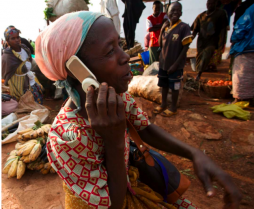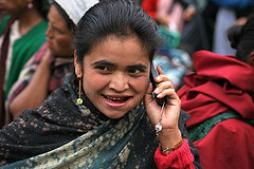women and mobiles
Posted by EKStallings on May 01, 2012
Deprivation, Distance and Connectivity: The Adaptation of Mobile Phone Use To A Life in Wesbank, A Post-Apartheid Township in South Africa data sheet 193 Views
Abstract:
The high uptake of mobile phones in the developing world has instigated studies on the impact of the use of Information and Communication Technologies (ICTs) on poverty reduction programs and other programs that would benefit the poorest and most excluded sections of the global population. It has created new hopes as to how mobile phones would be able to close the so-called global digital gap that exists between the developed and the developing world and transform the fortunes of the poor. As ICTs are always embedded in social and economic realities and practices which deeply influence, define, and restrict people's mobile phone use, one should however be cautious in transporting and applying findings and studies focusing on the created opportunities of mobile phone use from one continent, country or even society to another.
This article focuses on mobile phone use of middle-aged women, living in Wesbank, a post-apartheid township in Cape Town. By highlighting the main characteristics of the community (poverty, unemployment, crime, multilingualism and migration) we discuss the influences of these characteristics of 'a life in Wesbank' on mobile phone use. Although the adoption of amobile phone creates diverse opportunities with regards to connectivity, safety and re-imagination of the self, poverty proved to put a major constraint on the full use of the potentials.
Posted by AnneryanHeatwole on Mar 09, 2012
March 8th is International Women's Day and to mark the occasion, the GSMA mWomen Programme has released a study called "Striving and Surviving – Exploring the Lives of Women at the Base of the Pyramid." Drawn from 2,500 interviews with women (aged 16-64 in both rural and urban areas) living on less that $2 a day in Egypt, India, Papua New Guinea, and Uganda, the report looks at how mobile technology influences the way women approach health, economic development, and family relationships, and what mobile operators can do to reach more low-income women.
The report is divided into three parts; part one looks at the social, cultural, and economic factors that women at the base of the economic pyramid face in their daily lives, part two looks at the role of mobile technology in their lives, and part three looks at how technology can be used to further reach low-income women.
Some of the statistics pulled from the report show that when asked what the key benefits of mobile would be: [quoted from report]
Posted by CorinneRamey on Apr 02, 2008
In 2005, Samsung released a phone designed especially for women. The phone, with a "curvaceous, feminine design" included applications like a fragrance and aromatherapy guide, a shopping list, a calorie counter, a biorhythm clock, and a calendar to help women keep track of their periods. "Almost every woman will desire it," wrote one reviewer, in a piece entitled "High tech for the ladies."
Those marketers and reviewers have it all wrong.
For women around the world, mobile phones are not about sexy designs and knowing when it's that time of the month. Mobile phones are slowly changing the lives of women who use them and the communities in which they live. They've created a path out of poverty for many women in the developing world, as microfinance and "phone ladies" running businesses increase in numbers. Mobiles are enabling translation for victims of domestic violence in the United States, provide Ukrainian sex workers a way to safety, and protect Philippine domestic workers in the Middle East. Mobile phones are giving voice to female reporters in Africa and encouraging free speech in Egypt. And as mobile phones become increasingly ubiquitous -- they're already at 3.3 billion and counting -- they are likely to continue to influence the lives and societies of the women who use them in the future.


